As we reach the end of summer, our gardens may start showing the signs of a harsh season. Pest problems, extreme heat, drought, or too much rain are all taxing on plants, but how do you know when to clean up your garden? The answer to this question depends on a few factors. Certainly, those who live in northern climates will have a shorter summer and will start cleaning up much earlier than southern gardeners. However, no matter where you live, there are signs to look for when you are considering your end-of-summer cleanup.
When we discuss cleaning up our gardens at the end of the season, we do not mean pulling everything out and leaving a bare plot of soil until it’s time to plant next year. Putting our summer gardens to bed in the fall is part of the process of preparing for a healthy and thriving spring season. Bare soil left over the winter will attract weeds, which you must deal with before planting your spring crops. Also, without providing some protection, beneficial insects that overwinter in the soil and above ground may not survive the cold.
Signs it’s time to start cleaning up
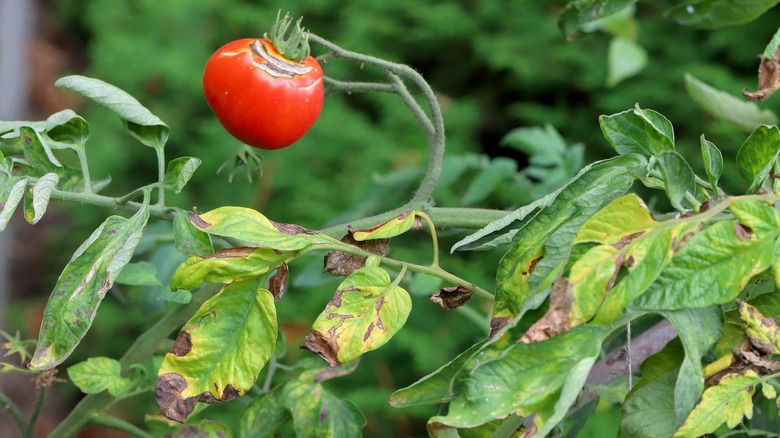
It’s not likely that you will have to clean up your entire garden at the same time. Some plants have much longer lifespans and tolerate the challenges of summer better than others. Green beans and cucumbers only last a few months before they are finished producing. You can pull these plants any time they look like they are spent. Other crops, like indeterminate tomatoes and okra, have long growing seasons. These vegetables may last until late fall depending on where you live.
As you observe your garden and decide what should go and what can stay (for now), look for signs that your plants are heavily infested with pests or diseases. For example, a plant loaded down with aphids is weakened and may not be able to bounce back for the rest of the season. Likewise, a tomato plant showing signs of late blight will only continue to decline. It’s best to pull these plants, which brings us to how to dispose of them safely.
Dispose of summer plants
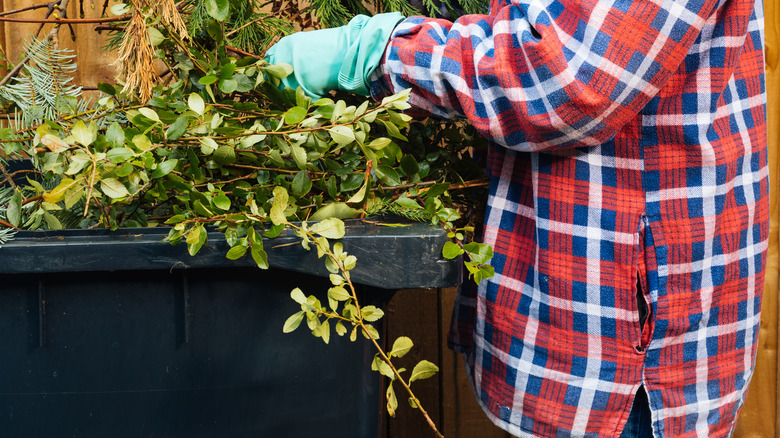
Once you have decided what plants to remove, there are two ways to deal with them. You can either cut them at the soil level or pull out the whole plant. If your plants were healthy with no signs of major pests or disease, cutting them to the ground is beneficial to the soil environment. This helps in part because you are not removing soil that inevitably comes out when you uproot a plant. Leaving the roots to decompose also keeps the soil biologically active over the winter by giving microbes, bacteria, and fungi something to consume. There are extra benefits to leaving the roots of plants in the legume family, like green beans, in the soil. These nitrogen-fixing plants take nitrogen from the air and turn it into tiny nodules on their roots, which will then add nitrogen to the soil.
While there are benefits to leaving the roots of healthy plants, you may do more harm than good by not removing an entire diseased plant. Since many diseases are soil-borne, a sickly plant with problems like tomato mosaic virus or fusarium wilt fungus must be removed completely and disposed of by throwing the plants away or burning them. Never compost pest-infested or diseased plants.
Make room for fall crops
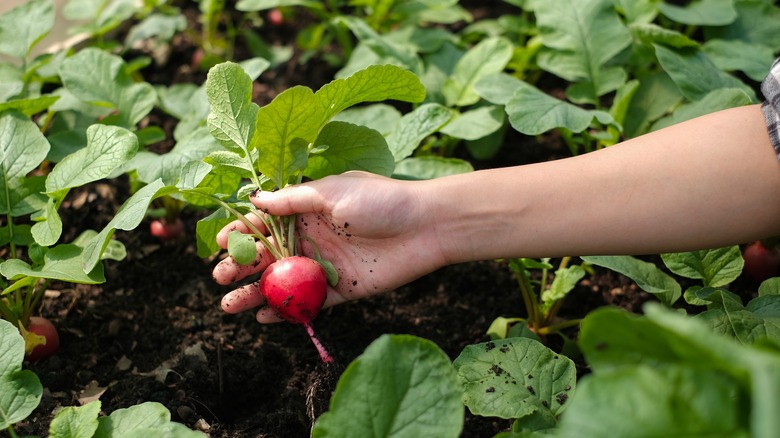
CardIrin/Shutterstock
In warm climates, you may be able to grow a full-season fall garden. The correct time to start your fall plants depends on how many days you have until the first expected frost date in your region according to the USDA plant hardiness map. You’ll use this date as a guideline to see if the plants you want to grow have enough time to reach maturity. Late cabbage can take between 60 to 100 days to form a head, depending on the variety. Other greens like kale and Swiss chard take around 50 days from planting to harvest. Since the frost date for your region is only a guideline, it can happen much earlier or later than expected. The key to a successful fall garden is growing hardy vegetables that will tolerate frost. You can also install frost cloth to cover your plants from frost and to prolong the growing season.
In cooler regions, your choices are much more limited for a fall garden. Stick to fast-growing, frost-hardy crops that grow quickly from seed. Radishes can take less than a month to reach maturity, and you can harvest leaf lettuce as soon as the outer leaves are about 4 inches tall.
Consider cover crops
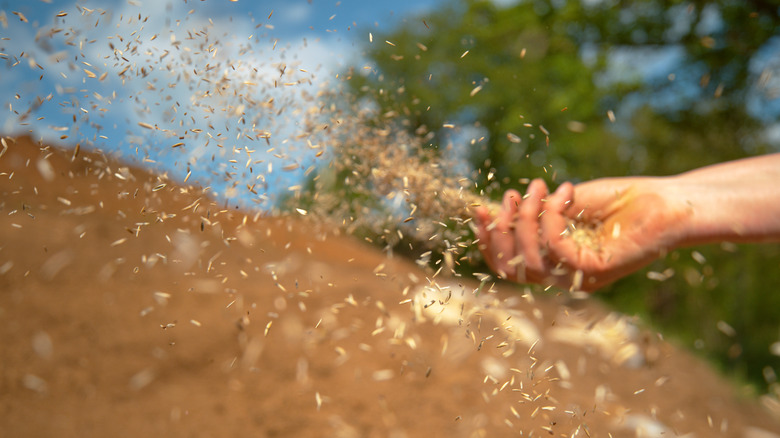
Flystock/Shutterstock
If you have had enough gardening for one year, that’s okay. Instead of doing a fall garden, you can grow cover crops to keep your soil protected, as you do not want to keep soil bare over the winter for a myriad of reasons. Reducing weeds, avoiding topsoil erosion, and protecting beneficial insects are just a few good reasons to plant a cover crop. Think of these plants as a placeholder — they act as a regular garden but without requiring tending. You just have to loosen the top inch or so of soil, scatter your seeds, cover them back up, and let them grow. These plants will die back over the winter or in the spring. Just work them into the soil with a shovel or tiller before you plant to add a boost of nutrients to your spring garden.
You can plant some frost-tolerant cover crops as soon as you remove your summer plants. For instance, you could plant annual ryegrass while it’s still warm, while oats and winter rye can be planted during the cooler months. The “when” and “how” of planting cover crops will depend on what works best in your region, so plant according to their specific requirements.
Prepare for spring
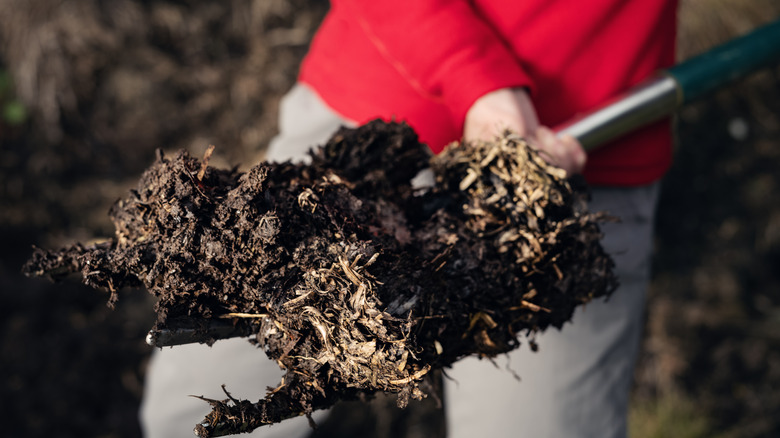
Lucentius/Getty Images
The healthiest spring gardens start in the fall. After you have removed all your summer and fall plants, clear out the weeds. Then, add 1 or 2 inches of good-quality compost. Over the winter, the compost will begin to break down, adding essential nutrients to the soil. You can wait until spring to do this part, but there’s always so much to do at that time of year.
After you have added compost, a few inches of mulch will offer an extra layer of protection against weeds while giving beneficial insects a place to overwinter. Yes, adding mulch will provide a safe place for pests too, but those little buggers are tough and will overwinter in your soil anyway. You might as well support your beneficial insects and let Mother Nature work it all out next year. By preparing your soil now, you can start your spring garden without much fuss. In the spring, all you’ll need to do is clear away any wayward weeds, scoot your mulch aside, and start planting.




